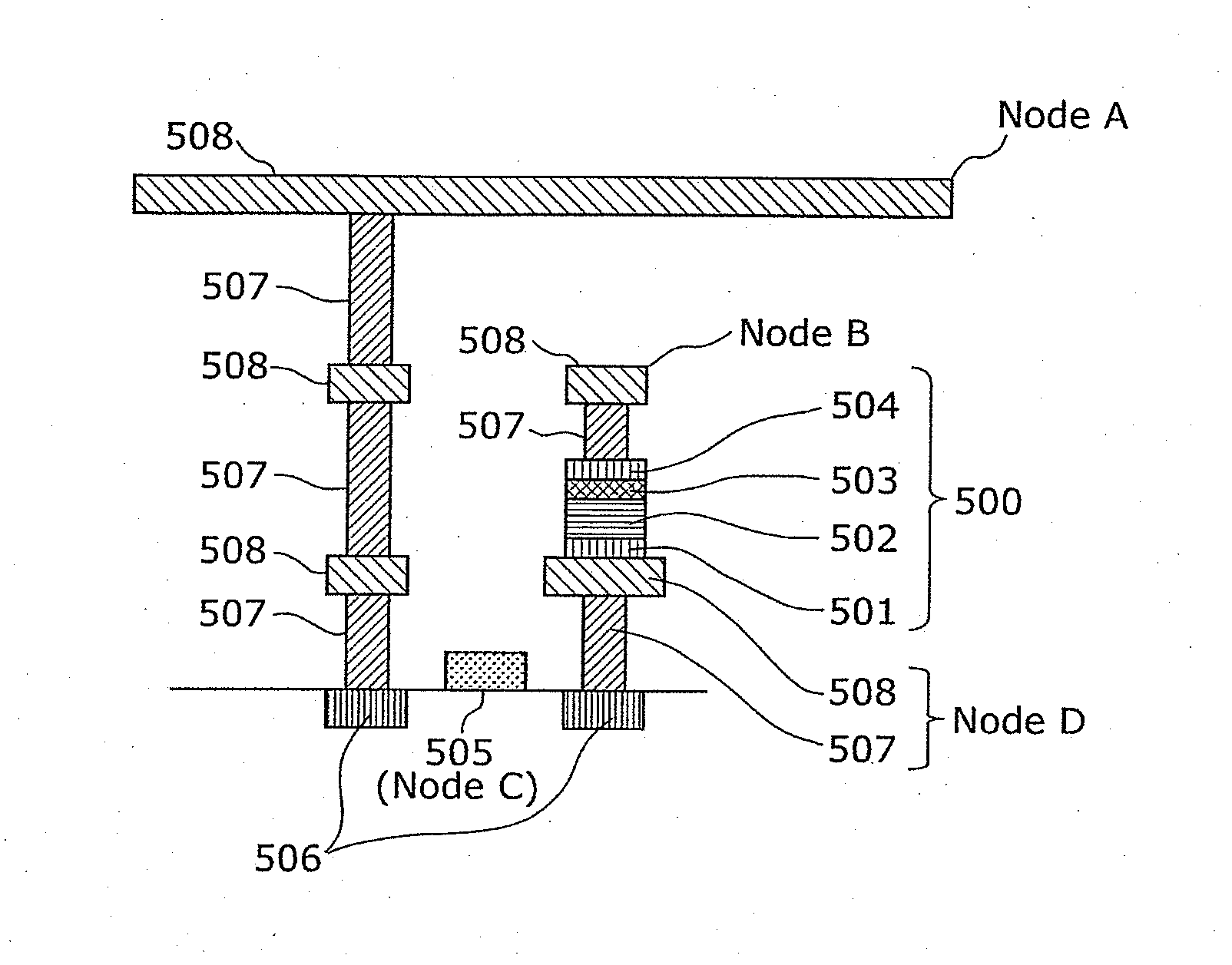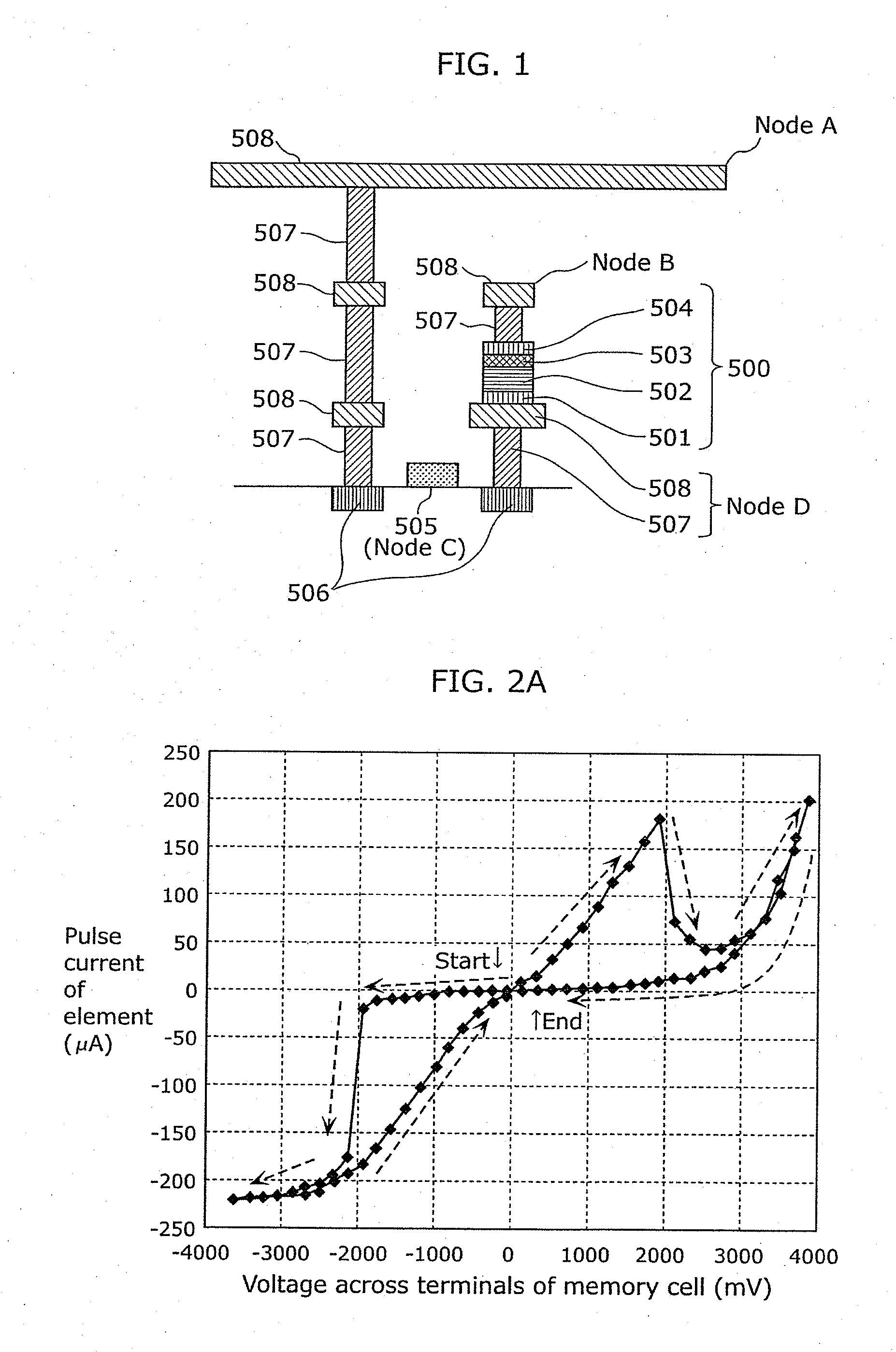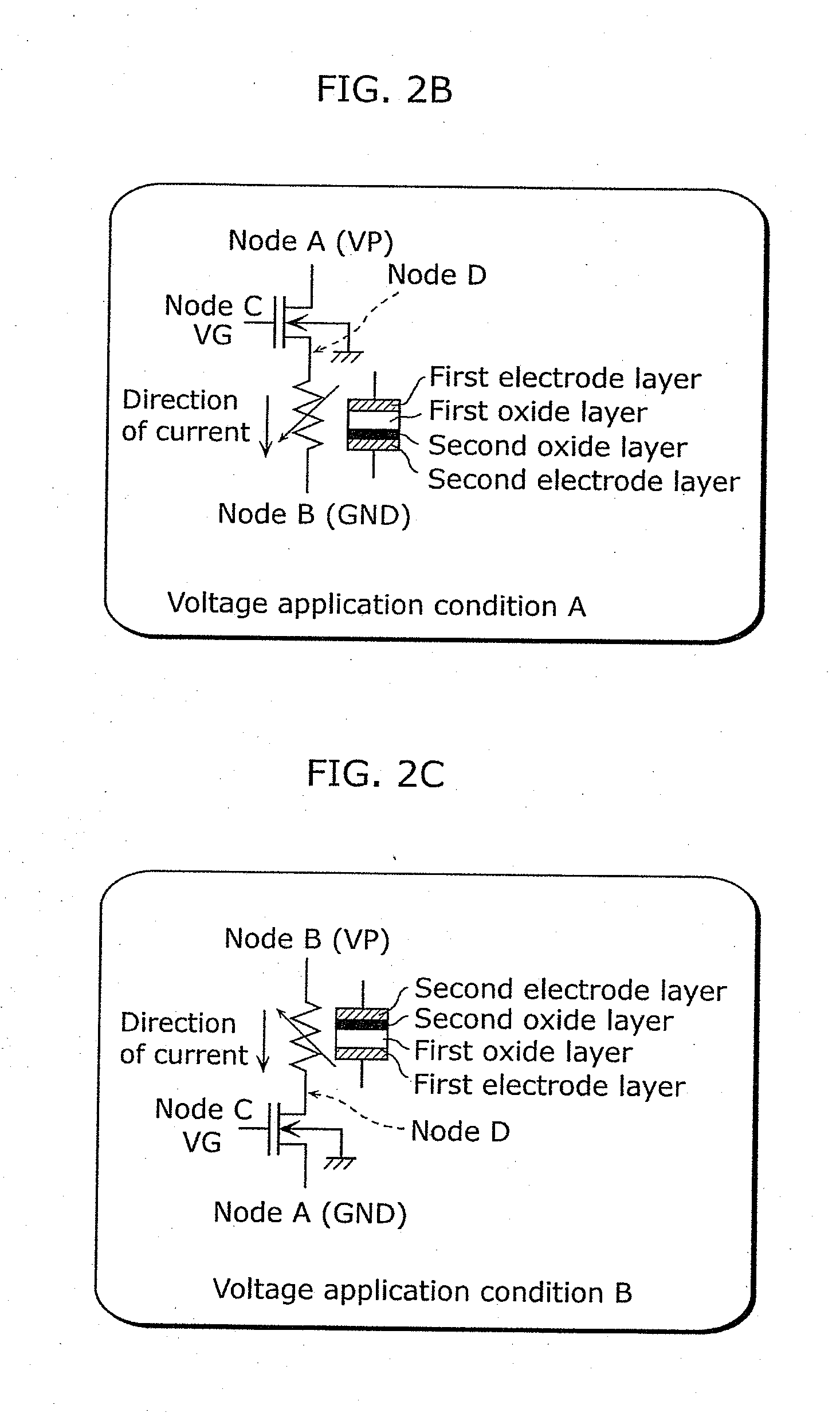Nonvolatile latch circuit, nonvolatile flip-flop circuit, and nonvolatile signal processing device
- Summary
- Abstract
- Description
- Claims
- Application Information
AI Technical Summary
Benefits of technology
Problems solved by technology
Method used
Image
Examples
embodiment 1
Configuration of Variable Resistance Element
[0108]First, a variable resistance element used for a nonvolatile latch circuit and a flip-flop circuit of the present invention is described.
[0109]FIG. 1 is an element configuration diagram illustrating an example of the schematic configuration of a variable resistance element having a nonvolatile latch circuit according to Embodiment 1 of the present invention. A variable resistance element 500 illustrated in FIG. 1 is formed on a semiconductor process structure including an ordinary CMOS transistor, and is connected to a semiconductor substrate using, for example, a plug layer 507 on the semiconductor substrate. An MOS transistor including a source-drain region 506 and a gate oxide layer 505 is formed on the substrate.
[0110]The variable resistance element 500 includes a first electrode layer 501 which is a first electrode formed on a metal wiring layer 508, a second electrode layer 504 which is a second electrode, and a first variable r...
embodiment 2
[0185]Next, Embodiment 2 of the present invention will be described with reference to FIGS. 12 to 14.
[0186]FIG. 12 is a circuit configuration diagram of a nonvolatile latch circuit according to Embodiment 2 of the present invention. In FIG. 12, FIGS. 13A and 13B, the components labeled with the same symbols as those in FIG. 3 indicate the same components. However, the gate widths of the transistors 6 and 7 are assumed to be the same as described below. The nonvolatile latch circuit 200 according to the present embodiment differs from the nonvolatile latch circuit 100 illustrated in FIG. 3 in that the control signal inputted to the gate of the transistor 6 via Ctrl1 terminal, and the control signal inputted to the transistor 7 via Ctrl2 terminal are separately inputted. Because of this modification, the store operation and the forming operation in Embodiment 2 are different from those in Embodiment 1.
[0187]As described in Embodiment 1, it is preferable to limit the current flow for a...
embodiment 3
[0205]Next, Embodiment 3 of the present invention will be described with reference to FIGS. 16A and 16B.
[0206]FIG. 16A is a circuit configuration diagram of a nonvolatile flip-flop circuit according to Embodiment 3 of the present invention. FIG. 16B is a diagram illustrating a logic table of the nonvolatile flip-flop circuit according to Embodiment 3 of the present invention. In FIG. 16A, the components labeled with the same symbols as those in FIG. 4 indicate the same components. A nonvolatile flip-flop circuit 300 according to the present embodiment differs from the nonvolatile latch circuit 100 of FIG. 4 in that the inverter circuits 20 and 21 are replaced by NAND gate circuits 50 and 51 with 2 inputs.
[0207]As described in Embodiment 1, when an input to Ctrl1 terminal and Ctrl2 terminal is GND level, and the transmission gates TMG2 and TMG3 are set to off state, the transistors 6 and 7, the variable resistance element 1, the summing amplifier circuit 22, and the inverter circuit ...
PUM
 Login to View More
Login to View More Abstract
Description
Claims
Application Information
 Login to View More
Login to View More - R&D Engineer
- R&D Manager
- IP Professional
- Industry Leading Data Capabilities
- Powerful AI technology
- Patent DNA Extraction
Browse by: Latest US Patents, China's latest patents, Technical Efficacy Thesaurus, Application Domain, Technology Topic, Popular Technical Reports.
© 2024 PatSnap. All rights reserved.Legal|Privacy policy|Modern Slavery Act Transparency Statement|Sitemap|About US| Contact US: help@patsnap.com










